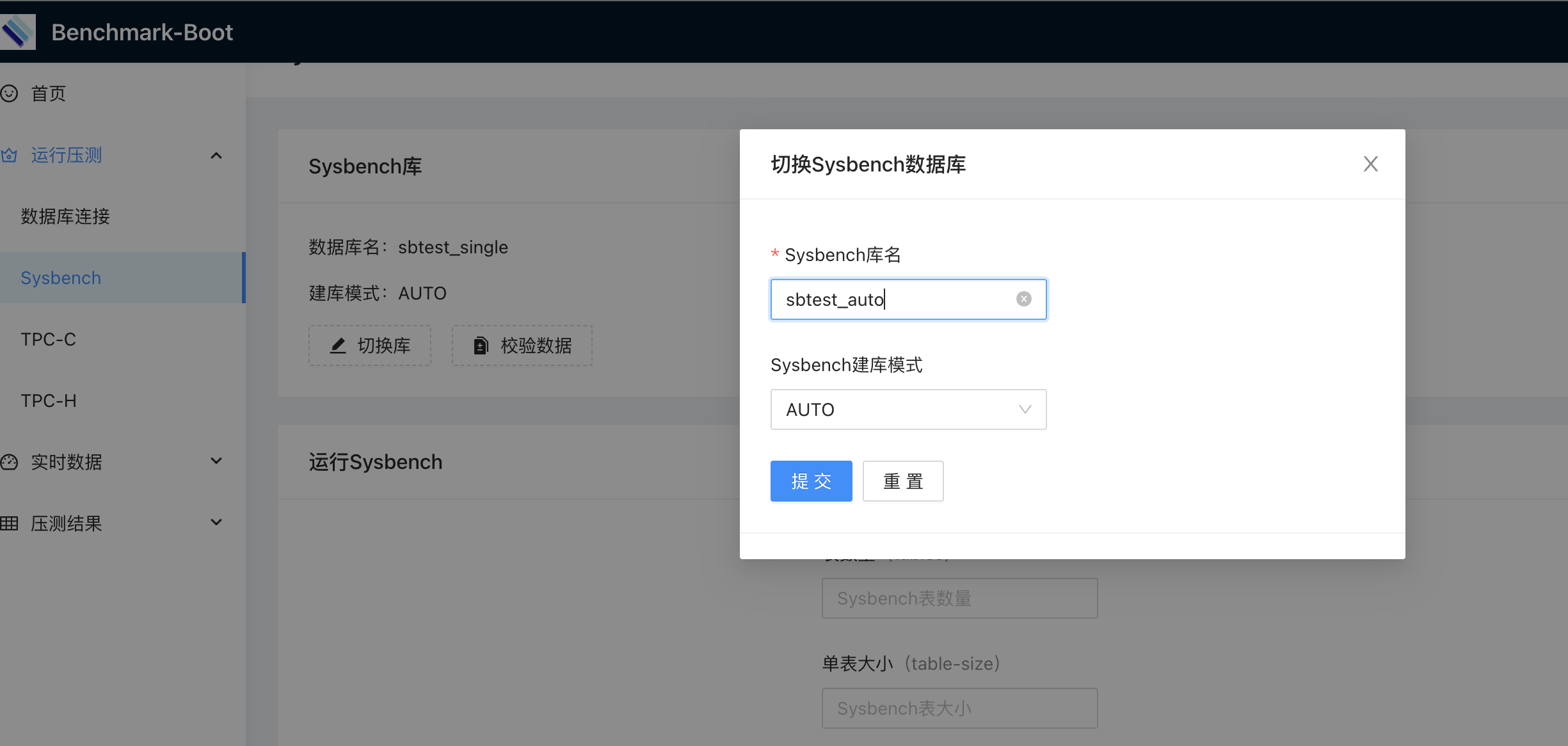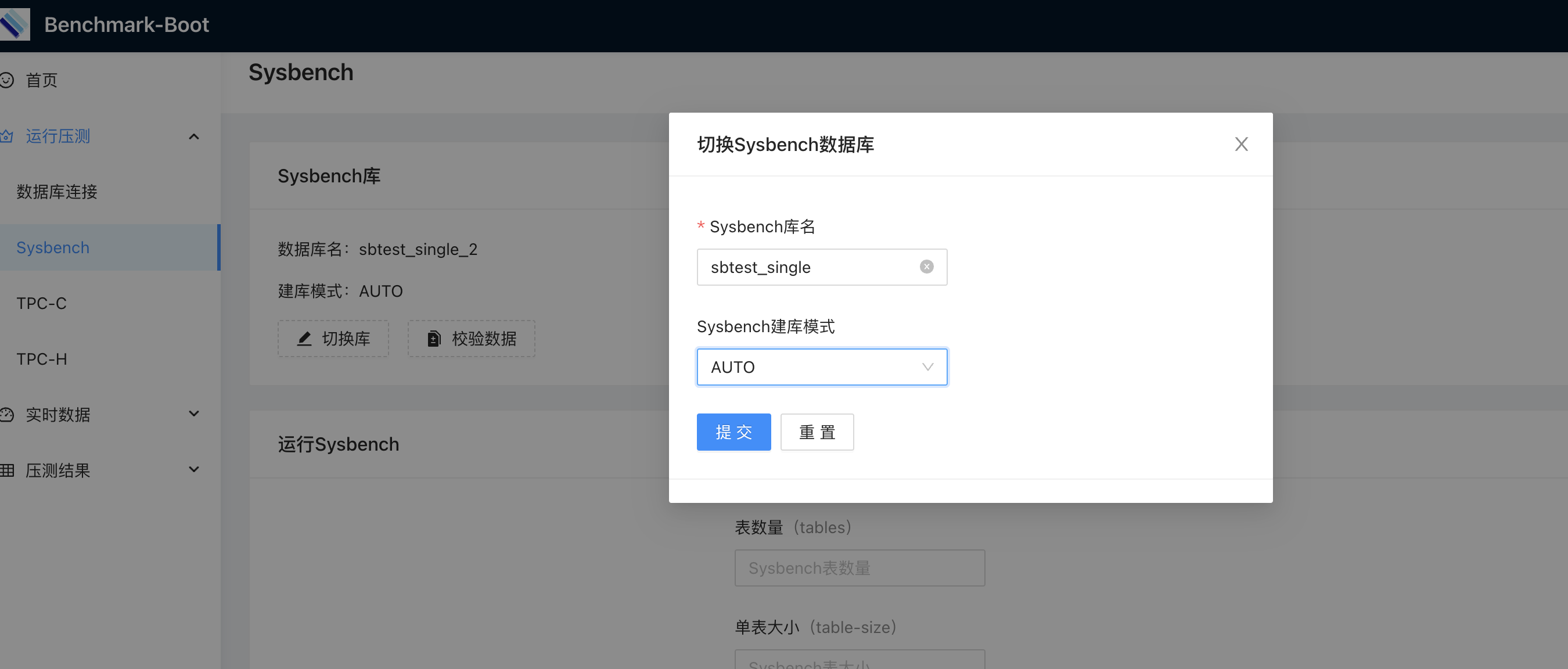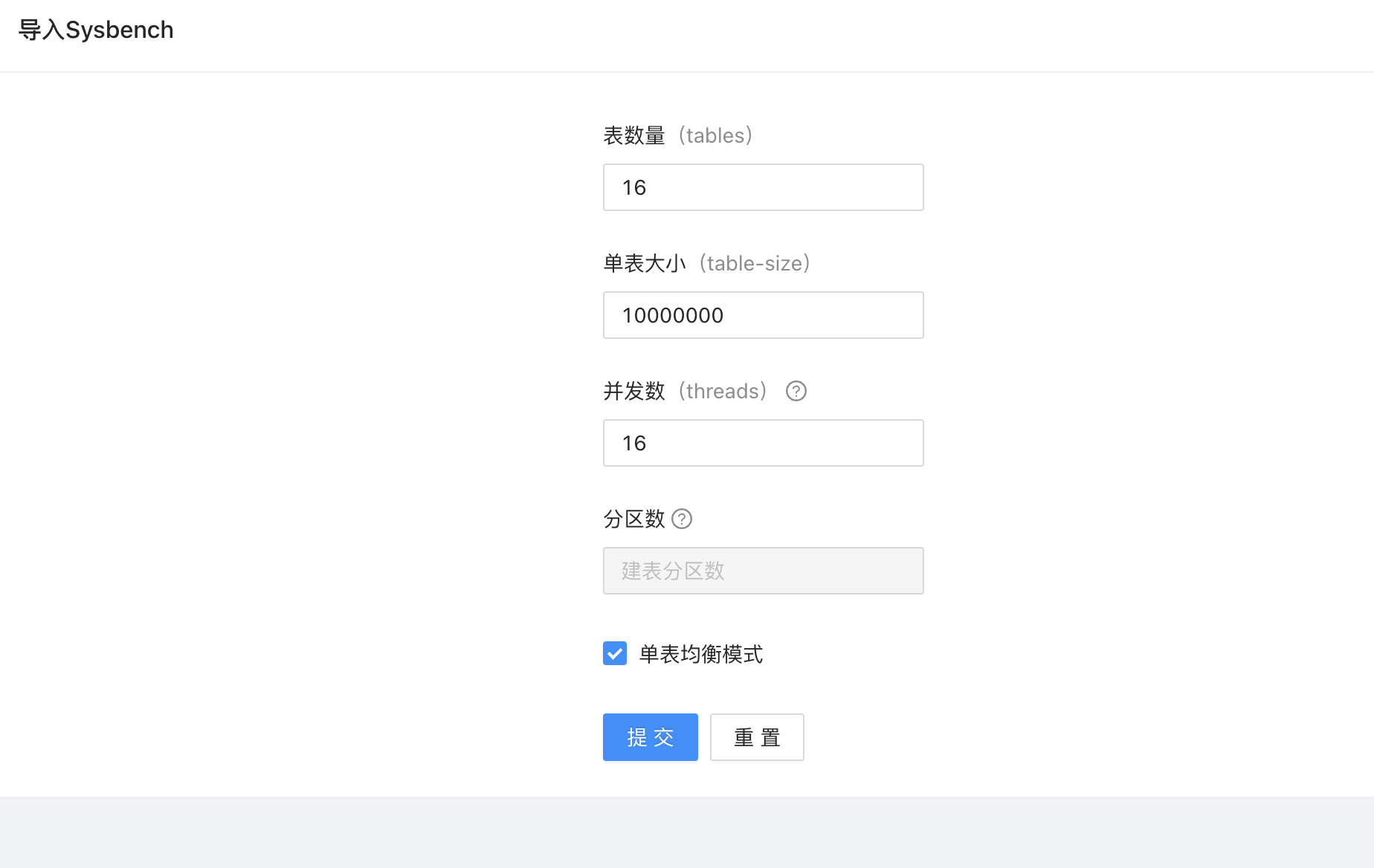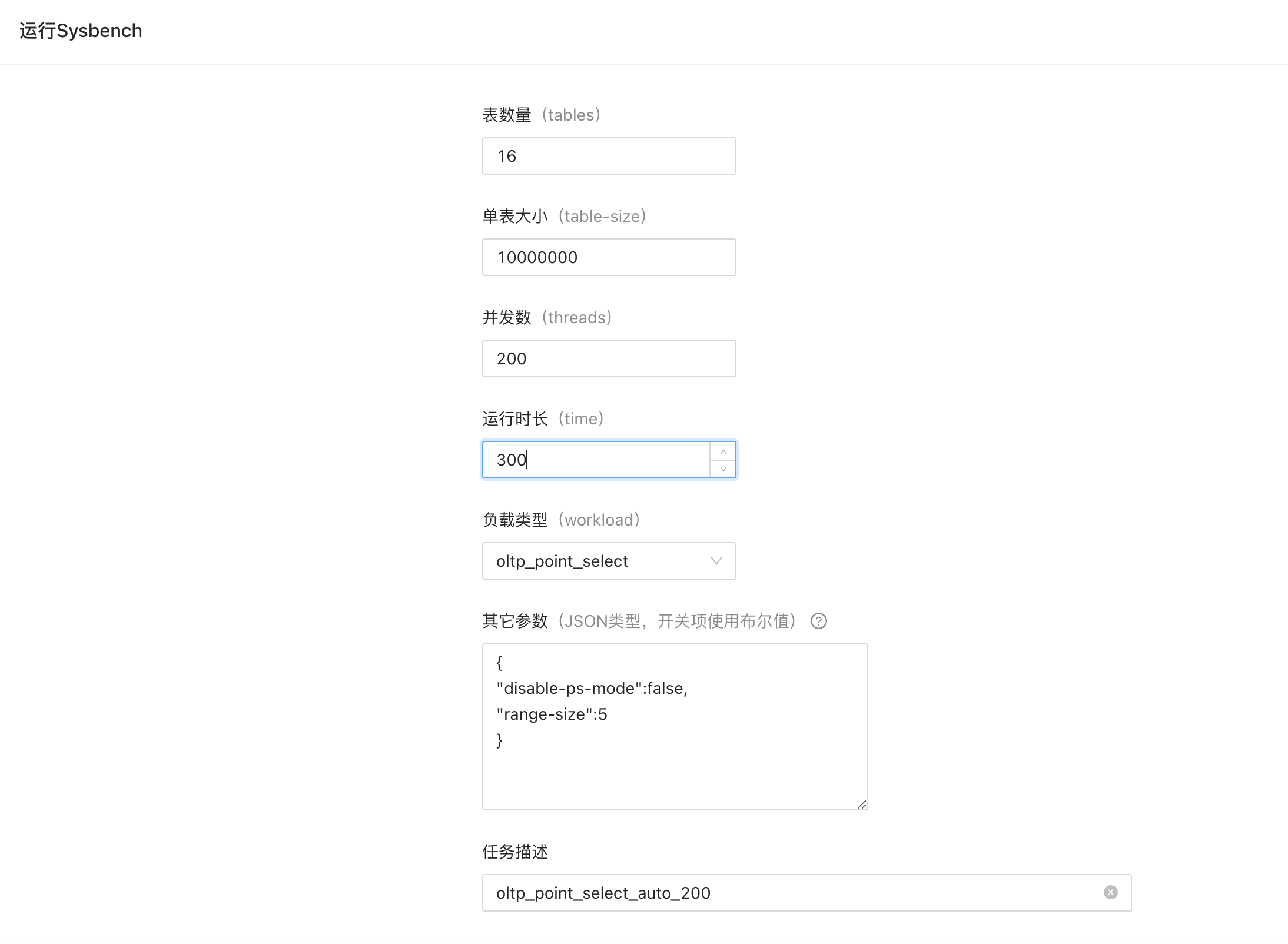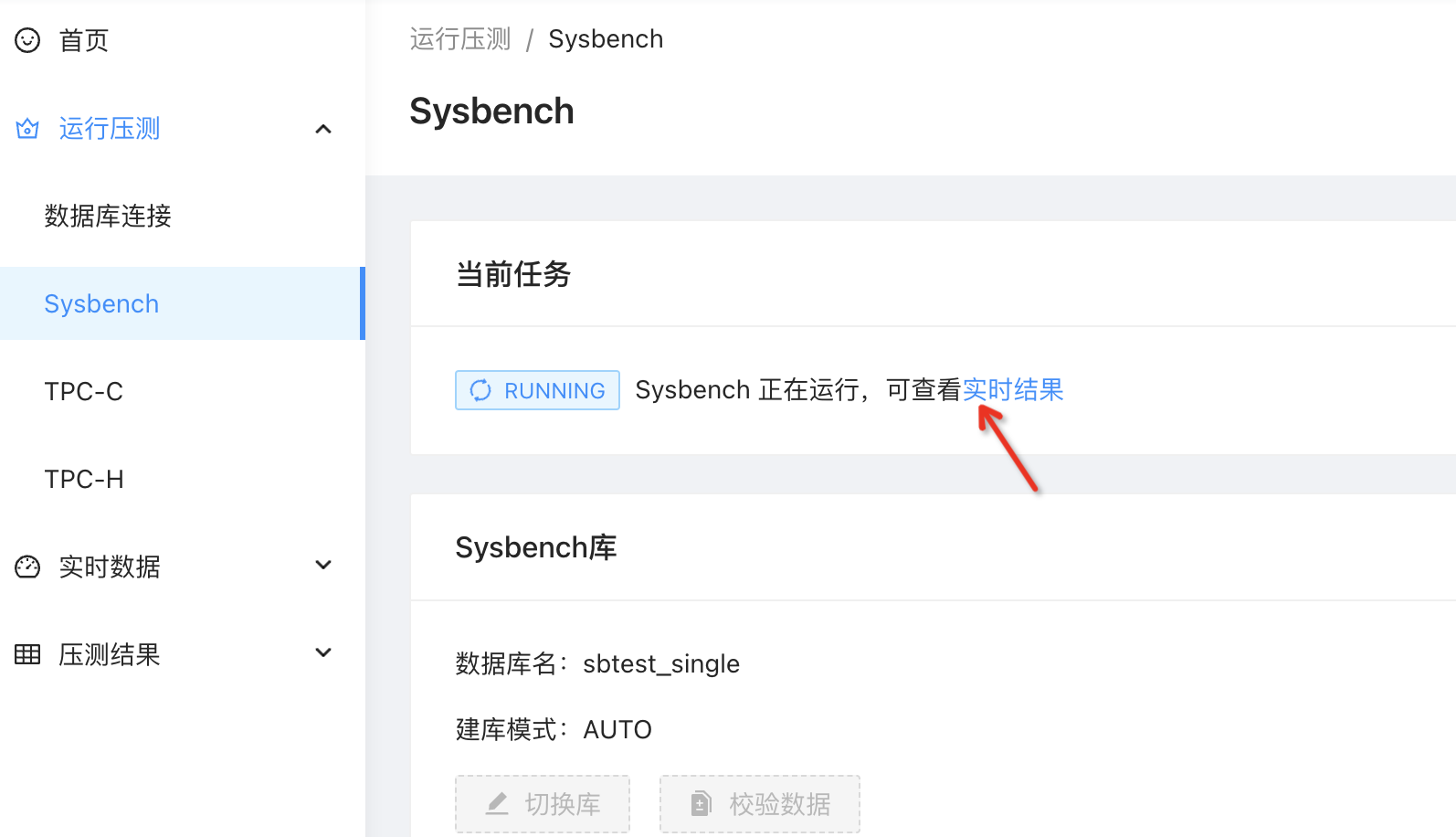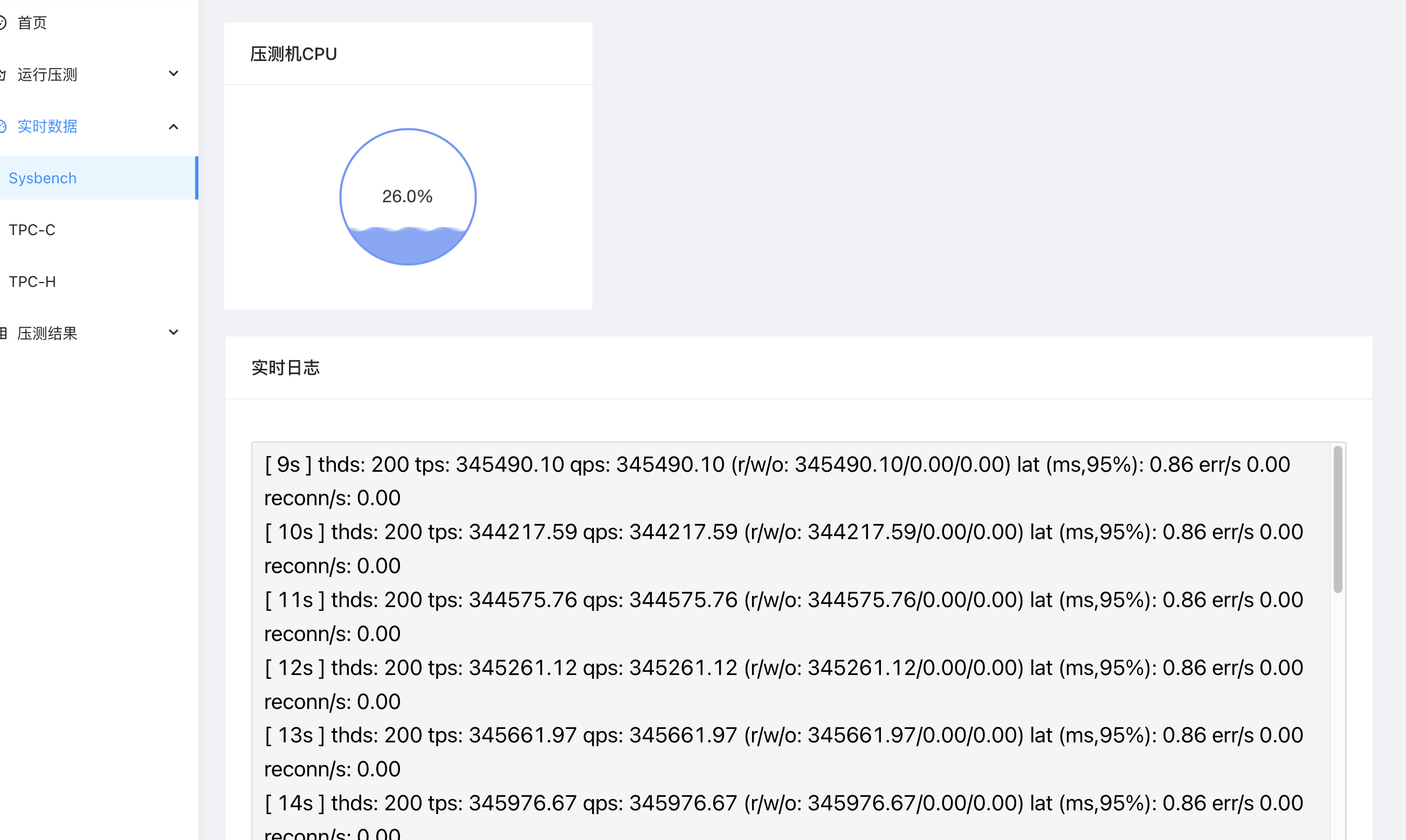Sysbench Test Report
Background Information
Sysbench is an open-source, modular, cross-platform, multi-threaded benchmarking tool that can perform database performance testing in areas like CPU, memory, threads, and I/O.
Benchmark Boot is a one-stop benchmarking platform developed for PolarDB-X, currently supporting benchmarks including Sysbench, TPC-C, and TPC-H, enhancing testing efficiency through a graphical interface.
Test Design
Data Volume for the Test
The sysbench data includes 16 tables, each with a volume of 10 million records.
Test Cases
Sysbench evaluates the performance of PolarDB-X for both partitioned tables and balanced single-table scenarios.
| Partitioned Tables | Each table in Sysbench is sharded by the id column, allowing large tables to be evenly distributed across multiple nodes through partitioning, offering linear scalability for scenarios like e-commerce transactions. |
|---|---|
| Balanced Single-Table | All Sysbench tables are created as single tables, which are evenly distributed across multiple nodes through partitioning, providing linear scalability for multiple single tables, such as in SaaS scenarios. |
Host Resources
| Component Name | Model | Description |
|---|---|---|
| OPS Machine | ecs.g7.4xlarge | For installation and deployment |
| Compute Node (CN) | ecs.hfg7.4xlarge * 3 | 16c64g Unit price: 2324 CNY/month |
| Storage Node (DN) + Meta Node (GMS) | ecs.i4.4xlarge * 3 | 16c128g + 3.5TB storage Unit price: 3776 CNY/month |
Storage nodes require better I/O, while compute nodes need more powerful CPU processing. Adopting a separate deployment approach can improve the cost-effectiveness of resource utilization.
Stress Test Machines
| Component Name | Model | Description |
|---|---|---|
| Stress Test Machine | ecs.hfg7.6xlarge | 24c96g |
Test Methodology
Step 1: Prepare the Stress Test Machine
Deploy Benchmark-Boot, refer to the documentation: Using Benchmark Boot for Stress Testing
# Download the image
docker pull polardbx/benchmark-boot:latest
# Start the container
docker run -itd --name 'benchmark-boot' --privileged --net=host \
-v /etc/localtime:/etc/localtime polardbx/benchmark-boot:latest \
/usr/sbin/init
# Verification
curl http://127.0.0.1:4121/
For offline deployment, the benchmark-boot image can be downloaded on the OPS machine and then uploaded to a private repository.
Step 2: Prepare the PolarDB-X Instance for Stress Testing
Create a PolarDB-X instance. For detailed steps, please see: Deploy by PXD
Instance creation parameters:
version: v1
type: polardbx
cluster:
name: pxc-test
no_logger: false
gms:
image: polardbx/polardbx-engine:v2.4.0_8.4.19
engine: galaxy
engine_version: "8.0"
host_group: [192.168.1.102, 192.168.1.103, 192.168.1.104]
resources:
mem_limit: 16G
cpu_limit: 8
cn:
image: polardbx/polardbx-sql:v2.4.0_5.4.19
replica: 3
nodes:
- host: 192.168.1.102
- host: 192.168.1.103
- host: 192.168.1.104
resources:
mem_limit: 64G
cpu_limit: 16
dn:
image: polardbx/polardbx-engine:v2.4.0_8.4.19
engine: galaxy
engine_version: "8.0"
replica: 3
nodes:
- host_group: [192.168.1.105, 192.168.1.106, 192.168.1.107]
- host_group: [192.168.1.106, 192.168.1.107, 192.168.1.105]
- host_group: [192.168.1.107, 192.168.1.105, 192.168.1.106]
resources:
mem_limit: 50G
cpu_limit: 16
Verify the instance is connectable, open Benchmark-Boot, and select 'Run Stress Test' -> 'Database Connection' on the left. Enter the database connection information into Benchmark-Boot and click "Submit".
Note: PolarDB-X provides multiple CN nodes. For production environments, it is recommended to use a load balancer for access. In POC test scenarios, you can use Benchmark-Boot's built-in load balance mechanism.
Configuration Example:
Enter multiple host IPs, for example: 192.168.1.102:3306,192.168.1.103:3306,192.168.1.104:3306, and fill in -1 for the corresponding port.
Step 3: Adjust Instance Parameters
Through Benchmark-Boot, on the left under 'Run Stress Test' -> 'Database Connection', set the tuning parameters. It is recommended to check all the TP mode optimization parameters.
Step 4: Data Preparation for Stress Testing
Prepare Partitioned Tables
Open Benchmark-Boot, select 'Run Stress Test' -> 'Sysbench' -> 'Switch Database' on the left, enter the database name sbtest_auto, and select AUTO mode.
After submitting, scroll down to the bottom of the page and fill in the data preparation parameters: 16 tables, table size 10,000,000, 16 concurrent threads. Do not check 'Uniform Distribution for Single Table' mode, click submit and wait for the data preparation task to complete.
Prepare Uniform Single Table Data
Open Benchmark-Boot, select 'Run Stress Test' -> 'Sysbench' -> 'Switch Database' on the left, enter the database name sbtest_single, and select AUTO mode.
After submitting, scroll down to the bottom of the page and fill in the data preparation parameters: 16 tables, table size 10,000,000, 16 concurrent threads. Check 'Uniform Distribution for Single Table' mode, click submit and wait for the data preparation task to complete.
Step 5: Execute the Stress Test
| Stress Test Scenario | Name |
|---|---|
| Point-Select | oltp_point_select |
| Read-Only | oltp_read_only |
| Read-Write | oltp_read_write |
| Update-Index | oltp_update_index |
| Update-Non-Index | oltp_update_non_index |
| Write-Only | oltp_write_only |
The table above lists the Sysbench scenarios included in this stress test. The point-select scenario, oltp_point_select, will be used as an example to demonstrate the stress testing method.
Open Benchmark-Boot and ensure that the correct database is selected for stress testing. If not, click to switch databases.
Select Run Stress Test->Sysbench on the left, and fill in the Run Sysbench form.
Note that additional parameters should be specified in JSON format. Copy the following settings, complete the setup and click to run the stress test.
{
"disable-ps-mode":false,
"range-size":5
}
To view the stress test results, click to view real-time results and enter the Real-Time Data page.
After the stress test is completed, record the results.
You can return to the stress test page, choose to fill in the parameters from the last test, make slight adjustments to the scenario or concurrency and continue testing other scenarios.
Test Results
The following results all use QPS (Queries Per Second) as the performance standard.
Partition Table Performance
| workload | 200 threads | 400 threads | 600 threads | 800 threads | 1000 threads | 2000 threads |
|---|---|---|---|---|---|---|
| oltp_point_select | 298986.10 | 332317.22 | 353429.85 | 368768.08 | 384603.36 | 401115.95 |
| oltp_read_only | 127038.97 | 149952.23 | 158191.47 | 164165.17 | 167982.73 | 175842.29 |
| oltp_read_write | 70659.78 | 93330.17 | 100237.59 | 106222.37 | 110953.07 | 122152.42 |
| oltp_update_index | 25998.96 | 34852.18 | 42258.07 | 48654.28 | 51277.58 | 65098.83 |
| oltp_update_non_index | 26524.99 | 33817.18 | 41295.47 | 48256.25 | 52668.72 | 65155.87 |
| oltp_write_only | 25870.66 | 34311.45 | 40751.06 | 47657.71 | 50757.05 | 61934.61 |
Balanced Single Table Performance
| workload | 200 threads | 400 threads | 600 threads | 800 threads | 1000 threads | 2000 threads |
|---|---|---|---|---|---|---|
| oltp_point_select | 301323.14 | 330835.04 | 349769.66 | 365575.37 | 379552.11 | 396272.64 |
| oltp_read_only | 266093.60 | 296501.34 | 315341.23 | 325793.21 | 339478.66 | 351669.63 |
| oltp_read_write | 84944.97 | 115190.00 | 134560.57 | 148352.19 | 156346.45 | 172508.63 |
| oltp_update_index | 26522.20 | 35441.67 | 41753.73 | 47883.84 | 53172.88 | 64892.92 |
| oltp_update_non_index | 26247.67 | 34830.22 | 41075.44 | 46921.88 | 52130.87 | 65652.31 |
| oltp_write_only | 26085.07 | 34952.64 | 40768.98 | 46192.18 | 50490.49 | 59538.28 |


